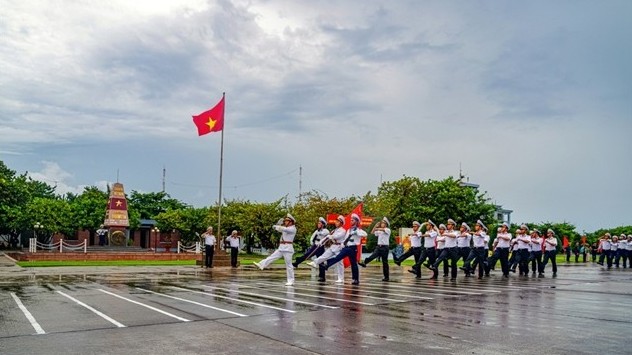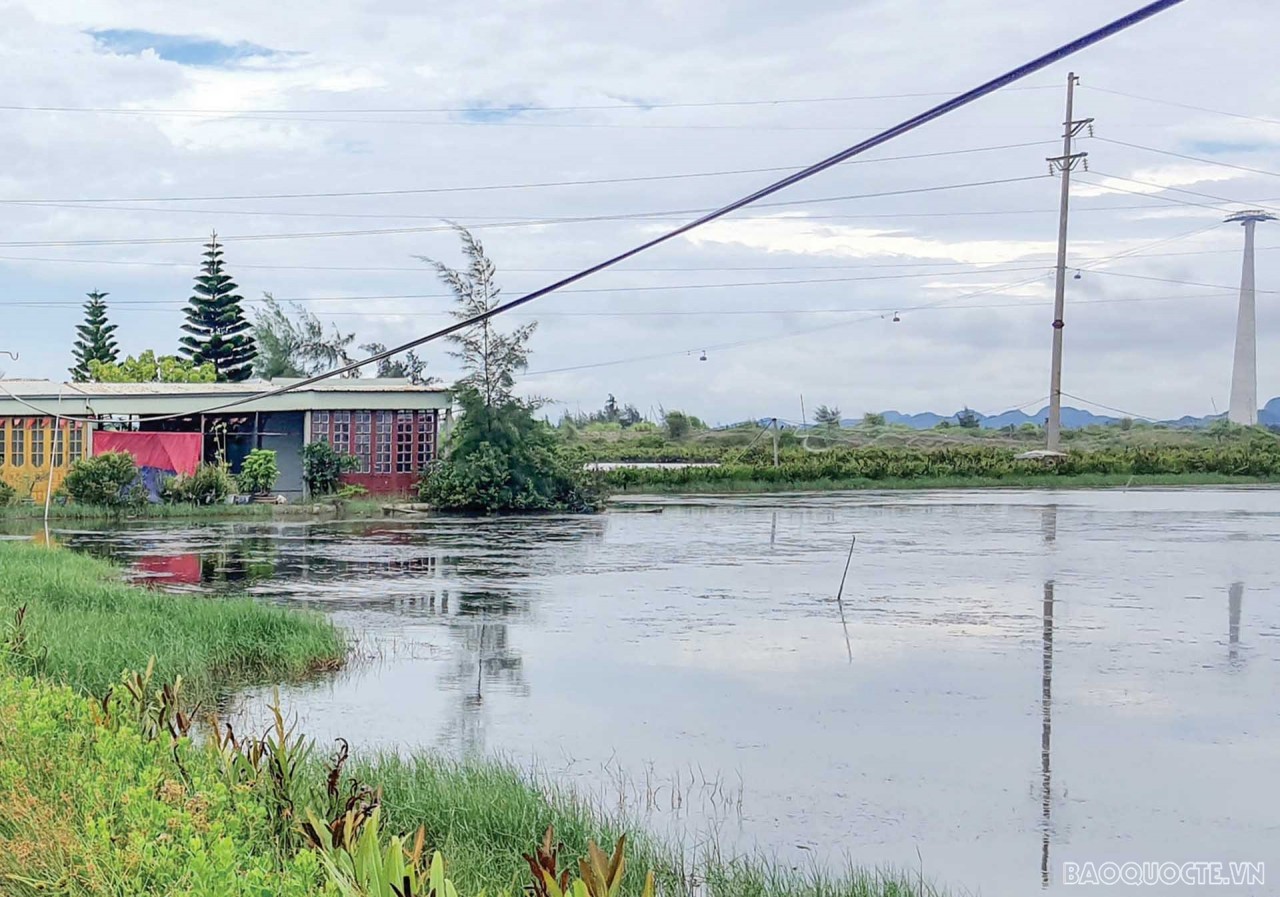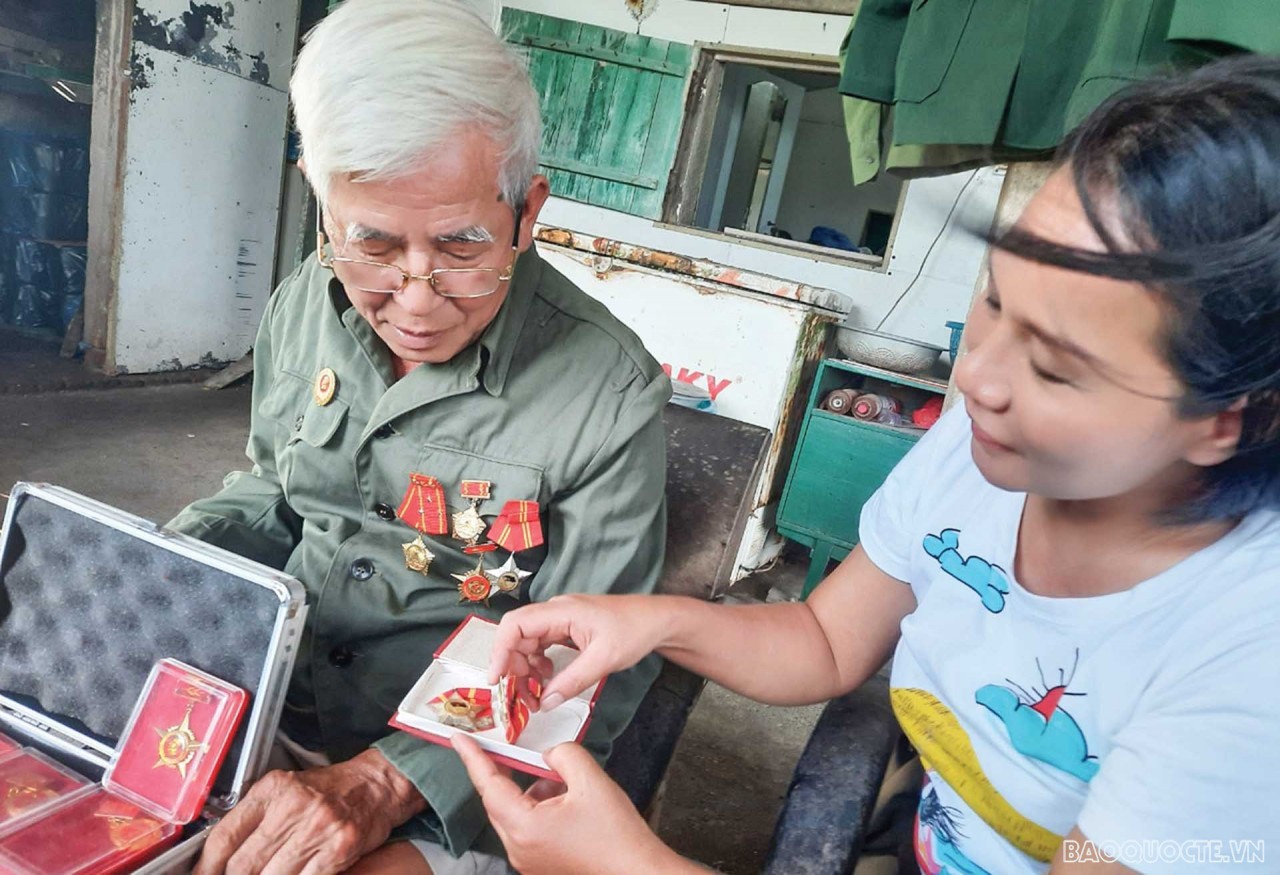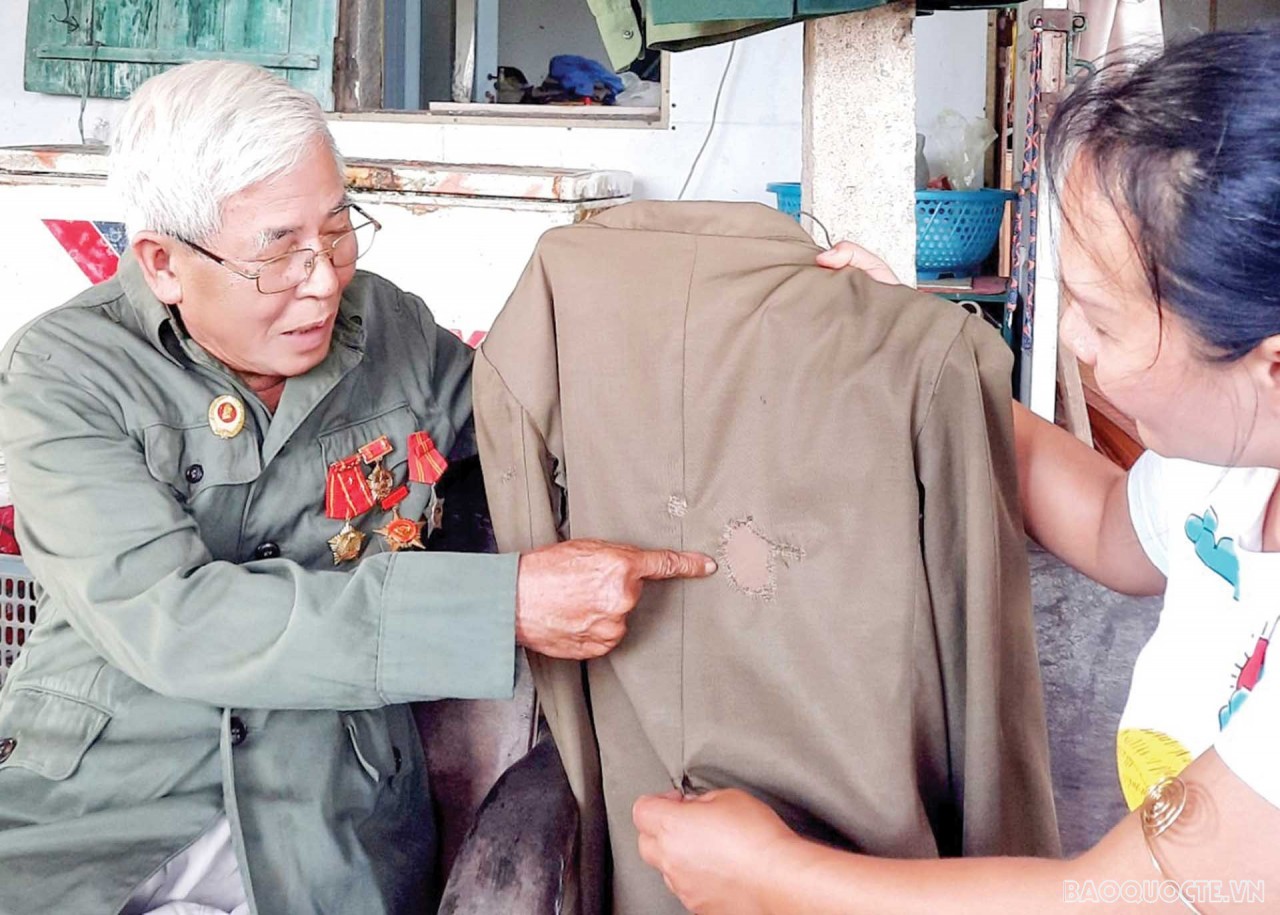
Meeting former journalist cum army major and listening to soldier life
Latest
 |
| Overview of the fishery of former journalist cum army major Le Mai and his son. (Photo by Manh Cuong) |
That day, the sky of the coastal city of Hai Phong was stunning, and my friend drove me on the Dinh Vu bridge (also known as Tan Vu – Lach Huyen sea crossing bridge) to Cat Hai. The early autumn sunlight and the cool breeze of the sea lured him to hum the lyrics:
“Binh wharf, Xi Mang wharf, Rao bridge, Dat bridge, Lac Vien… though these names don’t sound poetic, they are glorious to me.”
The heroic aura in the lyrics seemed to spread to me, predicting an inspiring trip…
My friend parked in front of a fairly large fishery. In the distance, I saw the figures of two men rowing a boat, right next to the deluge valves.
My friend greeted “Good morning journalist Le Mai, good morning seafood business owner Le Minh. What are you doing?”
A cheery greeting came in: “We’re setting up a V-shaped fishnet. Without it, the fish will escape in case of floods.” My friend turned to me to explain: “V-shaped fish traps not only help to increase the area where the water exits but also have better bearing capacity”.
I admonished my friend: “You should have told me in advance that we would visit a veteran journalist so that I could make some preparations.” He chortled: “Uncle Le Mai is a ‘Uncle Ho’s Soldier’, so he lives a very simple life. Don’t be afraid.” Looking out at the vast body of water and a small detached house where journalist Le Mai (former Director of Hai Phong City Broadcasting and Television Service Company) and his son were farming, I saw that my friend was right. The fear in me gradually faded away…
Swiftly climbing ashore and anchoring the boat to welcome guests, Le Mai did not look like an old man over eighty at all. He was born in 1939, but perhaps thanks to his training habits since he was a mechanized scout, he is still hale and hearty at this age.
In memory of a soldier’s life
Born in Ke Sat village (Hai Duong) as the only son in a family with a revolutionary tradition, Mai was soon imbued with patriotism and a spirit of hatred for the enemy. From the age of 14 or 15, he followed revolutionary cadres who were hidden and supported by his family. From the age of 18 and 20s, he participated in road construction in the resistance war against the French colonial and became a forestry worker. In 1961, he enlisted in the army under the decree on military service and his military career officially began here.
Squinting at my face, he smiled gently: “Today’s journalists are entitled to better conditions, not like in the period of fierce battles". My friend interrupted: “People were exhausted after marching to the South during the war once or twice, but he went there three times. He just went, got bored and returned; after that, he continued going. Not wanting to go alone, he would travel in groups.”
Le Mai slowly took a sip of tea and said “In 1962, I joined the corps 559. When the US attacked, the corps 559 was moved southward. When fighting at Le Thuy (Quang Binh), and then near the ferry wharf Thuy, I was honored to participate and witness the first victory of our army on August 5, 1964. That was the victory that dealt a strong blow to the enemy’s will.”
Four years later, in 1968, Le Mai went to the South again. This time, he was a lecturer at the School for Transportation officers under the General Department of Logistics, and the whole class was stationed in the Province of Khammouane (Laos). He said, thanks to this trip, he had the opportunity to briefly participate in the Road 9 - Southern Laos campaign to destroy the Lam Son 719 operation deployed by the US and South Vietnam troops in 1971.
In March 1975, he went to the South for the third time. It was unexpected that our troops liberated Saigon so quickly. No sooner had his troops arrived in Saigon and then camped at Tay Ninh (in order to support the liberation troops in the west of Saigon), than the news of victory came.
 |
| The author and former journalist Le Mai with his memorabilia and medals awarded by the Party and State. (Photo by Hanh Mi) |
He said: “I was just a logistics soldier, not in the main force, so my soldier life was just like that.” However, he decided to go into the small room, put on a decent army suit (I later learned that it was the same suit he wore during the 1973 parade) and brought a torn shirt with skillful stitches, and two boxes containing his memorabilia from the battlefield.
Battlefield stories
When he first joined the army, after six months of training at the training ground, soldier Le Mai was transferred to another unit and learned to drive. Once he was able to drive all kinds of vehicles and even tanks, he was assigned to the corps 559. At that time, there was no road, so wherever the convoy went, the roads were opened. As a result, he had to learn basic mechanized scouting skills.
He recalled that on the first time he went to the South, he was assigned to be the Head of the wounded-soldier-transferring station in Quang Binh, in charge of 21 vehicles carrying soldiers to Quang Tri and picking up wounded soldiers to Nghe An. The station only had one doctor and two nurses, so the driver also rushed in to carry wounded soldiers.
The mission of transporting wounded soldiers facilitated Le Mai to meet the young pioneer Ngo Thi Tuyen or to carry poet Pham Tien Duat many times on his side seat. He talked about how bullets exploded, bombs fell, and windshields broke, and about a friend driving a vehicle without windshields yet having a cheerful disposition. Later, Pham Tien Duat composed the poem “The squad of vehicles without windshields” which was turned into a song with the same title by musician Hoang Hiep.
“Every time I happen to listen to the song, I remember Pham Tien Duat and that delightful driver. He sacrificed only one week after I held a conversation with Duat”, Le Mai said.
 |
| Le Mai showed us the suit burned by napalm bombs and patched by his wife. (Photo by Hanh Mi) |
The parade suit
Pointing to the military uniform he was wearing, Le Mai said that his proudest thing was that on returning from his second trip to the South, he was selected to join the military parade in 1973 at Ba Dinh Square. This was a solemn military parade on the occasion of International Labor Day on May 1 led by General, Commander-in-Chief Vo Nguyen Giap. In January of that year, the Paris Agreement was signed, and peace was restored in the North. Nevertheless, the task of liberating the South and reunifying the country was still on the horizon.
Le Mai was very proud when standing in the logistics force of the parade. This was also the first time he saw with his own eyes General Vo Nguyen Giap on a UAZ vehicle crossing the Ba Dinh square.
He said: “It was a parade with real guns, not like current parades. His group practiced for three consecutive months, always ready to go to the South, and determined to win and reunify the country. After the parade, along with other memorabilia, the suit he wore at the grand ceremony that day has been carefully preserved until now.
After the long war to liberate the South and reunify the country ended, he asked to be discharged from the army as a Major and returned to build his homeland. When he was in the army, he often participated in writing wall newspapers, so he was assigned to work at the Voice of Vietnam, and then was sent to develop local radio stations. That’s why he later became the Director of Hai Phong City Broadcasting and Television Service Company.
The cool sea breeze seemed to interrupt the memoirs of journalist Le Mai. He patted me on the shoulder: “You want to visit my family’s fishery, don’t you? Whether in wartime or in peacetime, whether as a soldier or as a journalist, or now as an old fisherman, I always give my best. Labor always brings happiness!”.
I merrily stood up to follow the quick and firm footsteps of the soldier from the village of Ke Sat. Cat Hai’s sky on that day was marvelous. In my mind, the song on Dinh Vu Bridge resounded:
“That Hai Phong proudly raised its head. After hundreds of battles, our homeland has always been resilient. Hai Phong, which was small and insignificant in the past, is now equal to Saigon and Da Nang”.

















